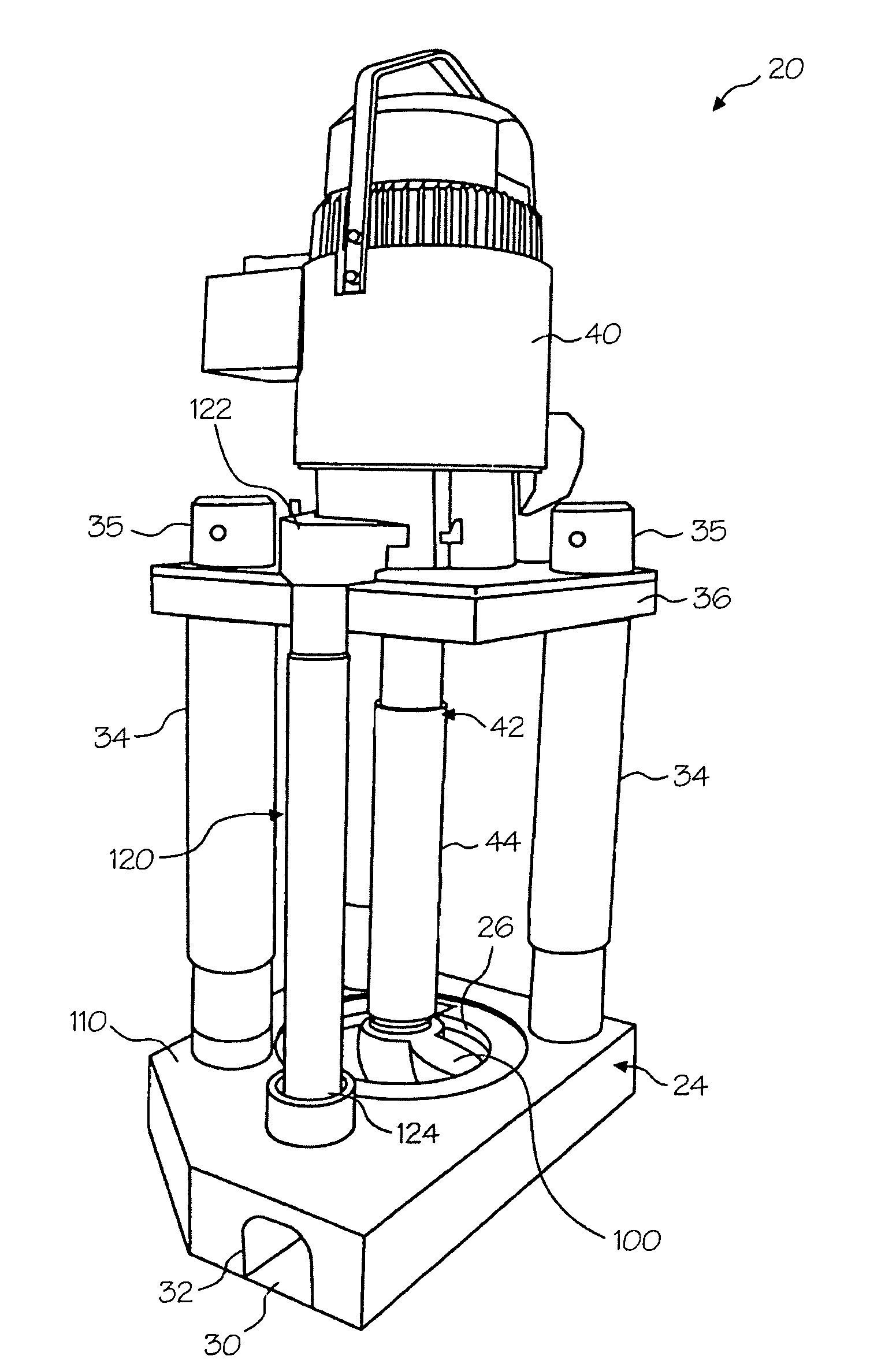System for releasing gas into molten metal
a technology of which is applied in the direction of positive displacement liquid engines, liquid fuel engines, manufacturing converters, etc., can solve the problems of low pressure behind, less interaction between gas and molten metal, and one or more of the components used to transfer gas into the molten metal may be susceptible to breakage, so as to reduce the stress and wear of components, reduce the amount of pressure, and increase the cross-sectional area
- Summary
- Abstract
- Description
- Claims
- Application Information
AI Technical Summary
Benefits of technology
Problems solved by technology
Method used
Image
Examples
Embodiment Construction
[0032]Referring now to the drawing where the purpose is to illustrate and describe different embodiments of the invention, and not to limit same, FIG. 1 shows a molten metal pump 20 that includes a device 100 in accordance with the present invention. When in operation, pump 20 is usually positioned in a molten metal bath in a pump well, which is usually part of the open well of a reverbatory furnace.
[0033]The components of pump 20, including device 100, that are exposed to the molten metal are preferably formed of structural refractory materials, which are resistant to degradation in the molten metal. Carbonaceous refractory materials, such as carbon of a dense or structural type, including graphite, graphitized carbon, clay-bonded graphite, carbon-bonded graphite, or the like have all been found to be most suitable because of cost and ease of machining. Such components may be made by mixing ground graphite with a fine clay binder, forming the non-coated component and baking, and ma...
PUM
| Property | Measurement | Unit |
|---|---|---|
| area | aaaaa | aaaaa |
| displacement | aaaaa | aaaaa |
| pressure | aaaaa | aaaaa |
Abstract
Description
Claims
Application Information
 Login to View More
Login to View More - R&D
- Intellectual Property
- Life Sciences
- Materials
- Tech Scout
- Unparalleled Data Quality
- Higher Quality Content
- 60% Fewer Hallucinations
Browse by: Latest US Patents, China's latest patents, Technical Efficacy Thesaurus, Application Domain, Technology Topic, Popular Technical Reports.
© 2025 PatSnap. All rights reserved.Legal|Privacy policy|Modern Slavery Act Transparency Statement|Sitemap|About US| Contact US: help@patsnap.com



